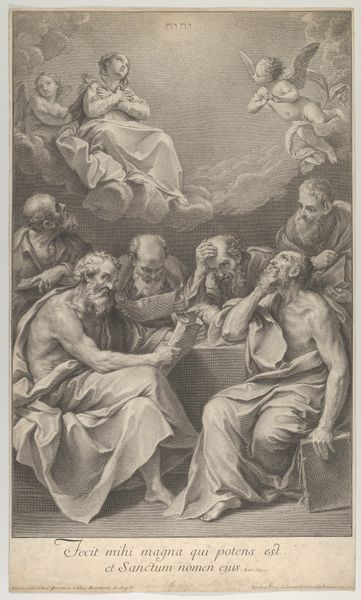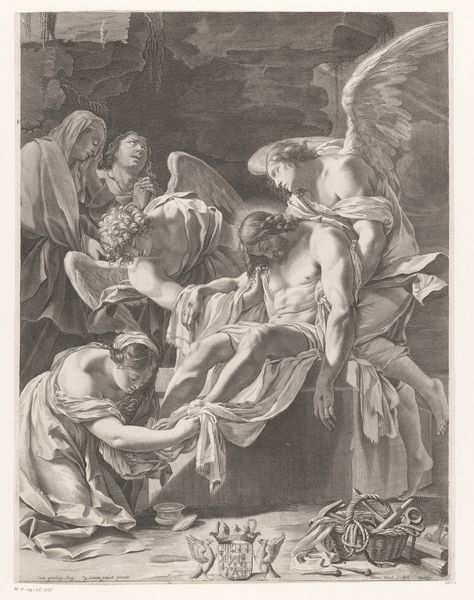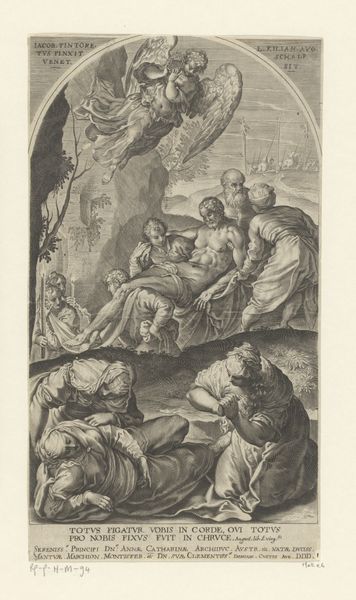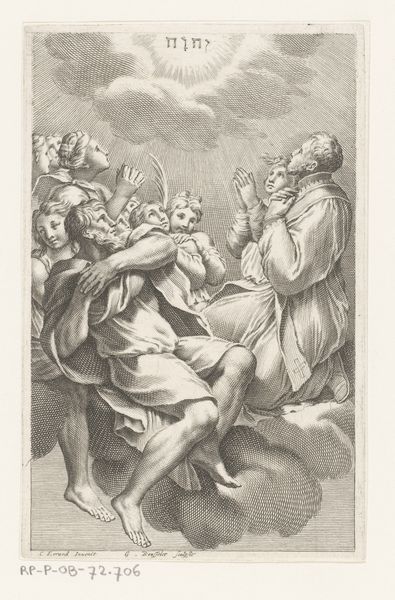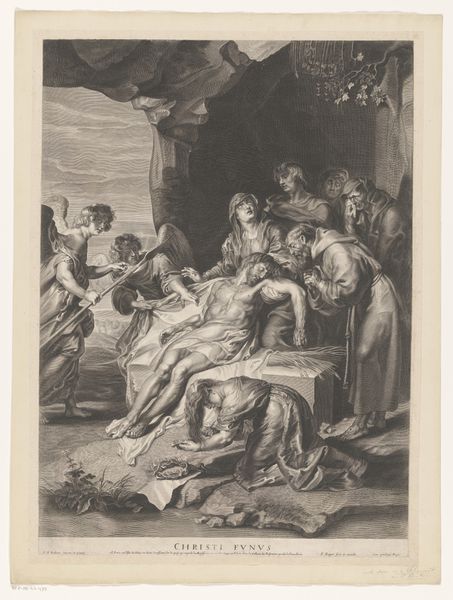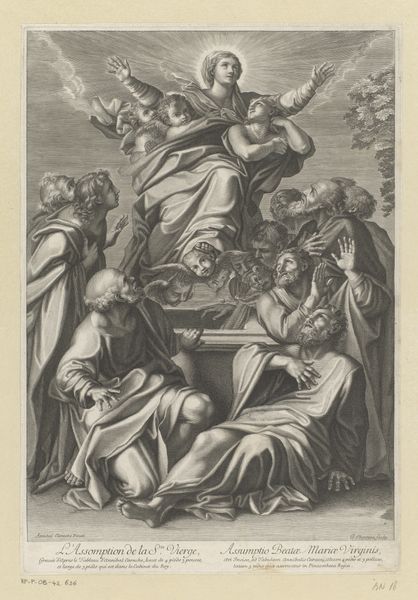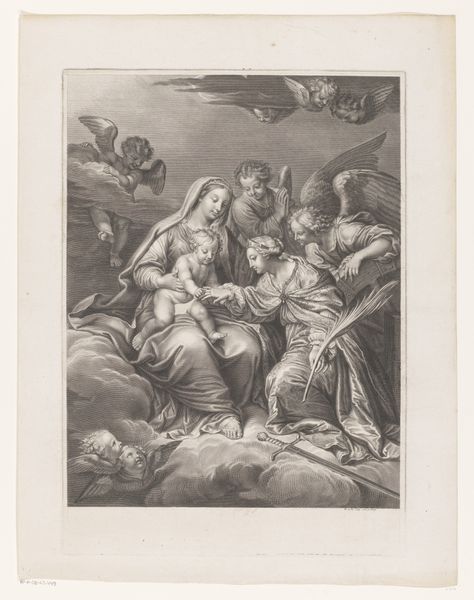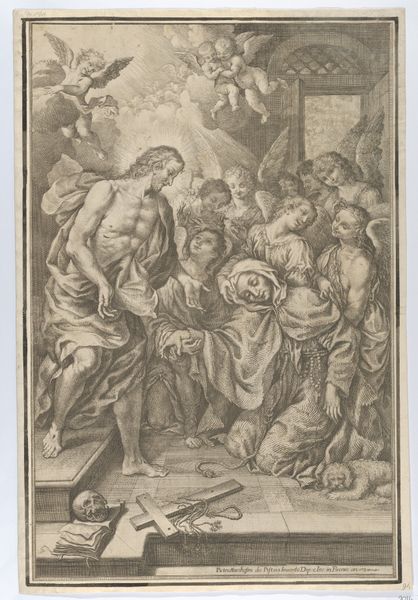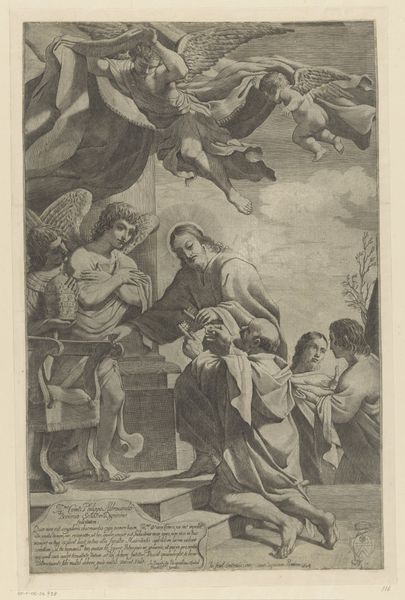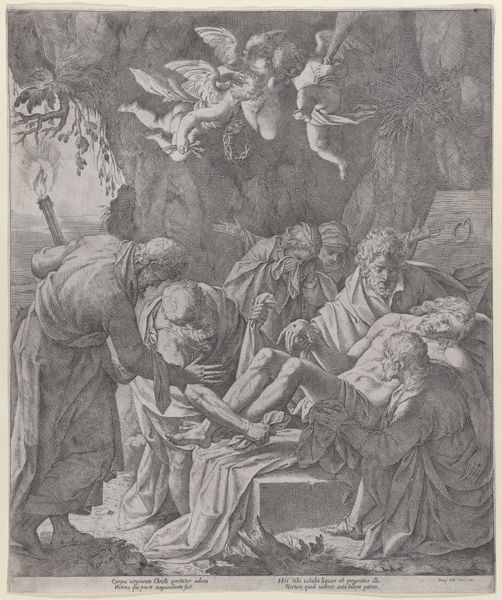
The doctors of the church consulting books and documents and contemplating the Virgin who is shown above in heaven, flanked by angels, after Reni 1785
0:00
0:00
Dimensions: Image: 23 in. × 15 1/2 in. (58.4 × 39.3 cm) Sheet (Trimmed): 25 5/16 × 16 7/8 in. (64.3 × 42.8 cm)
Copyright: Public Domain
Here we see an engraving by William Sharp, made after Guido Reni's painting, using the printmaking technique of engraving. The character of an engraving comes from the patient labor of cutting lines into a metal plate, which then hold ink and transfer the image to paper. The clarity of line and tonal variation speak to Sharp's mastery, but also to the broader system of reproductive printmaking. Prints like this one circulated widely, making artworks available to a broad audience. Unlike painting, engraving is intrinsically linked to the idea of multiples. This raises questions about value, labor, and access to culture, and the hierarchies that usually separate ‘high’ art from more accessible forms. Considering the sheer labor involved—the skilled handwork, multiplied by the number of impressions pulled—we can see that even a seemingly straightforward reproduction carries significant social and economic implications. It challenges the idea of the artwork as a unique, auratic object.
Comments
No comments
Be the first to comment and join the conversation on the ultimate creative platform.
